Lt John Fox

(photo courtesy of Army.mil)
Artillery lends dignity to what would otherwise be an uncultured brawl.
–Cannon cocker’s motto
When I was at Ali al Salim Airbase, three Medal of Honor recipients came to visit us. The youngest was a Vietnam vet. They said words to the effect of, “We’re all really old. We’d want our society to include more younger members, but quite frankly, we wouldn’t wish what we had to do to earn the Medal of Honor on anybody.”
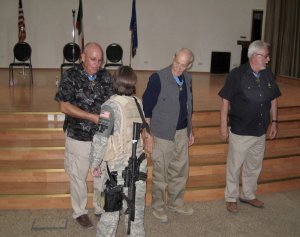
True dat. The fact that they were living Medal of Honor recipients made them very exclusive members of an already exclusive club. What I found nearly as impressive as the actions that earned them their honors was the fact that one of them had been wounded in combat 14 times.
Correcting a Wrong
It’s no secret that President William Jefferson “Bill” Clinton despised most people and things military. Like President Donald Trump after him, Clinton had skillfully managed to evade military service. Like Trump, Clinton tended to marginalize and disregard people who were not likely to vote for him–which for Clinton included many, if not most, of those who served or had served in uniform.
Unlike Trump, Clinton had an excellent grasp of the English language. When Clinton implied that American gun owners were all ignorant and illiterate, he said it so eloquently, it took me a second to infer that I and everyone like me had just been stereotyped and insulted. “Wait–what? ‘Read a book’? Kiss my pimply . . .!“
Not much good occurred in the Department of Defense during the Clinton administration. One positive thing was that more military specialties were opened to women.
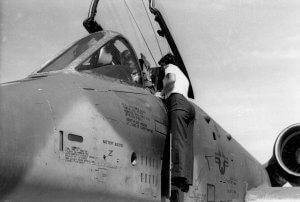
Another positive thing was a re-examination of World War Two Medal of Honor awards.
The Medal
Something like 3526 Medals of Honor have been awarded in our nation’s history.
The requirements for the award have changed through the years, and become more strict, since the MoH was our primary military decoration of the Civil War. In 1918, the criteria were amended to include only deeds by members of the military “in action involving actual conflict with an enemy.” Before that, some sailors got the Medal for jumping off ships, or rowing into surf raging around rocks, to rescue people who were drowning.
Every US soldier who was killed or maimed during the GWOT–the Global War on Terror, in the first two decades of the 21st century–would describe their experiences as “actual conflict with an enemy,” even though that enemy was often unseen, and blew them up remotely. Some Medals of Honor have been awarded for actions during the GWOT. Paradoxically, the “conflict” criteria was why USAF Airman Spencer Stone, Anthony Saddler, and Army Specialist Alek Skarlatos did NOT get the US Medal of Honor after engaging in face to face, empty hands combat with a terrorist armed with an AK, a pistol, and a knife on the 15:17 train to Paris.
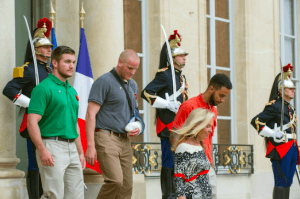
They did, however, become Knights of the French Legion of Honor, so they probably didn’t have any trouble meeting girls, even without the MoH.
Black men were awarded the Medal of Honor before World War I, for courageous acts during the Civil War, as “Buffalo Soldiers” during the so-called Indian campaigns, and for service on foreign shores.
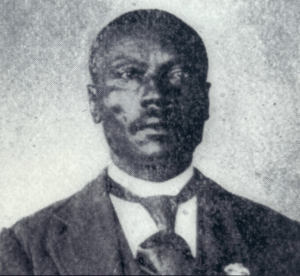
Pictured above is one of them, SGT Henry Johnson, Company D, 9th US Cav, one of the Buffalo Soldiers who rode to the rescue of Thornburgh’s beleaguered White River Expedition, pinned down by Colorow’s Utes at Milk Creek. Johnson constantly exposed himself to Ute fire while checking on the men, and went outside the laager to bring back water for the wounded.
But during World Wars I & II, an unwritten requirement apparently was “said gallantry above and beyond the call of duty having been displayed conspicuously by a White man.”
472 Medals of Honor (473 if you include the one for the Unknowns) were awarded for conspicuous gallantry in the second World War. In the bloodbath which was WWII, with all its opportunities for bravery and sacrifice, “when uncommon valor was a common virtue,” only one US soldier of about twenty-six thousand (25,812, by my mediocre math) was awarded the Medal of Honor.
I say “awarded” rather than “earned” because there were probably many more who would’ve earned it, but gave their last full measure of devotion when none of the witnesses lived to tell of their heroism.
Hell, in 1943, only one 8th Air Force airman in five completed his 25 bombing missions without being shot down, shot up, or killed. I think every single person who got in a bomb-and-fuel laden B-17, rolled down the runway, and crossed the English Channel deserved some kind of medal.
But the Medal of Honor is truly something special. Only one for every 26K combatants, during the most wide-ranging and destructive war this planet has ever seen, is pretty exclusive.
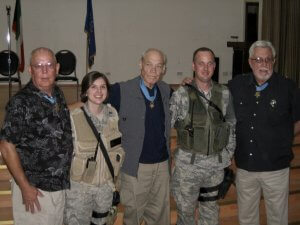
According to the National WWII Museum’s website, there were 12,209,238 American men and women in uniform in 1945, the year the war ended.
Unlike, say, Vietnam, when draftees served in-country for a year and then were discharged–whether we won or not–the World War Two soldier was in it to win it, because he was in it for the duration. His reward for fighting all the way from Normandy to the German surrender, and living through it, was to be shipped off to kill Japanese.
Actually, more than 12,209,238 Americans served in uniform (just about everybody contributed to the war effort in some way) in WWII. We shouldn’t forget to add the 407,316 who were killed. Far more were wounded so severely they were discharged, before 1945. But let’s use that number as a starting point for some very rough calculations.
Of those 12 million soldiers, sailors, airmen, marines, and coast guardsmen, 901,896 were listed as Negroes (nobody was “African American” in those days). In other words, for about every 14 men and women in uniform, one was identified as Black.
If those brave Black men (and even some women) who served had the same opportunities to demonstrate their courage, and were recognized at the same rate as White soldiers, roughly 35 Black men would have earned the MoH for service in WWII.
But prior to the 1990s, the number of Black WWII vets awarded the Medal of Honor was:
Zero.
Zip. Zilch. Nada.
Blacks served in segregated units in WWII, and were often relegated to the most menial jobs. It’s hard to display conspicuous gallantry when you’re hauling supplies, guarding ammo dumps, building roads, peeling potatoes, or cleaning latrines–even though wars can’t be won without such efforts. But when the USS Arizona blew up, cooks and commanders alike were killed. Certainly in all the carnage which was WWII, SOME Black folks had the opportunity to do what must be done to earn such a distinction.
A Department of Defense review board (not sure how much Clinton actually had to do with it) felt the same way. Combing through the considerable records–think how many moving, heartbreaking stories they had to read!–revealed that several Black soldiers had done things so outrageously courageous, the only plausible explanation for their not having previously received the Medal of Honor was that we, as a nation, simply didn’t consider Black people nominated for that award in WWII.
On 13 Jan 1997, President Clinton had the privilege of honoring seven of them, by bestowing upon them (or usually, their living relatives) the Medal of Honor.
One of those posthumous MoH recipients was First Lieutenant John R. Fox.
The Man
1Lt Fox was a forward observer for the field artillery. His job was to go to the front lines and radio (or field phone) instructions to the cannon cockers in the rear.
Specifically, the FO made requests to the FDC, the Fire Direction Center. The FDC would then issue instructions to the artillerymen on the gun line (the various howitzer batteries), who, with proper direction, could focus fires from several batteries, in different locations, on a specific area targeted by the forward observer.
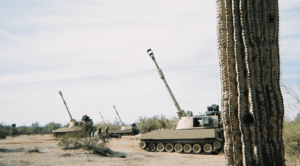
1Lt Fox spent the Christmas of 1944 fighting in the Serchio River Valley of Italy, in the small village of Sommocolonia. After Fox & friends drove them out the first time, Germans disguised themselves as civilians to re-infiltrate Sommocolonia. At about 0400 on 26 Dec 1944, suddenly losing their disguises, Nazis appeared in large numbers throughout the town, launching a major counterattack.
“I can’t call in sick on Mondays when the weekend’s been too strong. I just work straight through the holidays, sometimes all night long.”
–Toby Keith, American Soldier
1Lt Fox stayed behind with a small Italian forward observer party to cover the American withdrawal (almost all of the Italians had, by then, ditched Mussolini and switched sides).
I served for a few years in Alpha battery, 1/180 Field Artillery, of the Arizona Army National Guard. I ran their small arms armory, and never learned as much as I would have liked about the crossed-cannon world.
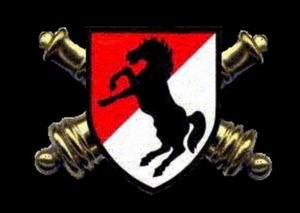
But I do know one thing:
The very FIRST thing a forward observer tells the FDC (fire direction center) is his or her own location.
For obvious reasons.
The gunners of the 598th Field Artillery Battalion knew exactly where 1Lt Fox was, on the second floor of a house. He kept adjusting fires closer and closer to his position. “That was just where I wanted it,” 1Lt Fox said. “Bring it [back in] 60 yards.” The rain of explosive artillery shells was already what we call “danger close,” but he kept bringing it in closer.
Finally, the FDC asked for clarification. According to their maps, there must be some mistake. He’d called in artillery on his own position. When he repeated his request, the FDC commander got on the line. “Fox, that will be on you!“
“Fire it,” 1Lt John R. Fox said. “There’s more of them then there are of us.”
They honored his last request.
It took the Allies nearly a week to drive the Germans back out of Sommocolonia. On 01 Jan 1945, they found Fox’s blasted remains in the ruins of the house, surrounded by about a hundred dead Nazis.
His wife Arlene was only one of hundreds of thousands of American widows to receive a “We deeply regret to inform you” telegram from the War Department. 1Lt Fox also left behind a 2-year-old daughter, Sandra.
Three years later, on 26 July 1948, President Harry Truman, a commander in chief who had actually seen combat, ordered the American military to de-segregate. Southern Democrats (and no small share of Republicans too) resisted de-segregation in the civilian world for another two decades, but Black soldiers fighting alongside White (and Brown, and Red, and Yellow) soldiers in Korea and Vietnam were awarded Medals of Honor.
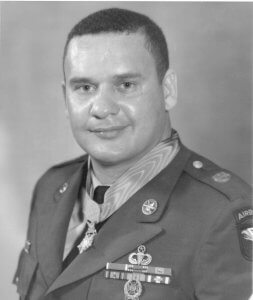
Speaking of Yellow, the numbers for Asian Americans clearly deserving but not receiving the Medal of Honor for conspicuous gallantry in WWII were even more lopsided than those for Black service members–but those stats and stories deserve their own blog.
One of the most recent Medal of Honor recipients is SFC Alwyn Crendall Cashe, who repeatedly ran through enemy fire, and crawled into a burning Bradley fighting vehicle, to rescue his burning comrades on 17 Oct 2005.
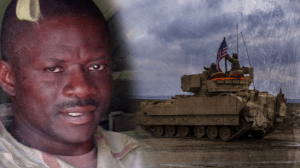
Cashe had been in the turret and got out of the Bradley first. As he helped the driver out of the driver’s hatch, his gas-soaked uniform caught on fire, as did he. After putting out the driver’s flames, SFC Cashe when back into the burning vehicle to rescue another.
Then he went back into the flames to pull out another.
And again for another.
And another.
And another.
And their Iraqi translator. Not necessarily in that order.
What was left of SFC Cashe lingered for about 3 weeks after that before the 2nd and 3rd degree burns over 72% of his body killed him on 08 Nov 2005.
“We’re thankful for those thankful for the things we’ve done . . ..”
–Trace Adkins, Arlington
1Lt Fox was not even awarded a Distinguished Service Cross until the Reagan administration, on 15 Apr 1982.
Half a century after he widowed her, Arlene accepted his Medal of Honor.
A building at Ft Sill, Oklahoma, the home of the American Artilleryman, is now named after John Fox.
Ever been there?
Didn’t think so.
Real Martyrdom
In the decades following 1Lt Fox’s selfless sacrifice, the Reverend Martin Luther King, Jr, risked martyrdom every single day of his crusade to free his people. On 04 Apr 1968, it finally caught up with him. Dr King probably didn’t plan to die for his cause that day, but he always knew it was a possibility.
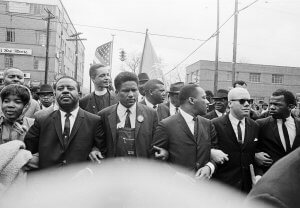
Just as every cop of every color who walks out the door to go to work knows, today might be the day they never come home again.
When Rosa Parks committed libertarian social disobedience, refusing to obey an unjust law requiring her to sit in the back of the bus, she risked painful persecution and even possible martyrdom. She was able to get an unjust law overturned, but today, half a century later, some social and economic inequalities still exist.
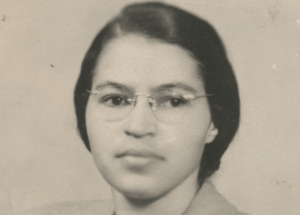
1Lt John Fox was born in 1915. He experienced segregation, discrimination and injustice far more horrible than the worst nightmares of the most fervent twenty-first century BLM protester.
Fox earned a degree in engineering when not many African Americans were able to get a college education. Had he not chosen to sacrifice himself, he might have been one of the few Black men of his era to pull his family out of poverty.
Yet, when our nation called, John Fox was all in. Not only did he risk martyrdom for his cause; he stared into the face of the enemy and demanded it. He intentionally gave what little he had, and everything he was ever going to have, to save the lives of his fellow American GIs, and to liberate not only his own people, but all of Europe and the entire world, from the yoke of Nazi fascism.
Not what some spoiled Antifa hipster calls “fascism,” but actual, shoots-Jews-in-a-ditch fascism.
Today, America’s youth paint murals of their hero George Perry Floyd Jr, the “gentle giant” ex-convict who was martyred for every American’s God-given right to pass counterfeit currency while high on fentanyl and meth while out of prison on probation.
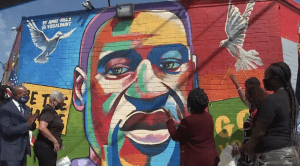
Where are the murals of 1Lt John R. Fox?
–George H, lead instructor, Heloderm LLC
Special thanks to Karen Flowers of Army.mil for her 28 Jan 2021 article, “Field Artillery Soldier Became a WWII Hero,” as well as the websites of the National WWII Museum of New Orleans (nationalww2museum.org), and the Congressional Medal of Honor Society (cmoh.org), for info and stats I stole to compile this article. I also referenced Donald E. Cooke’s For Conspicuous Gallantry, a 1966 book my parents gave me when I was young, as well as the book The 15:17 to Paris, and “A Legacy Forged in Cashe,” from the March / April 2021 Disabled American Veterans magazine. Info about SGT Johnson comes from my tour of the Milk Creek battlefield and from Mark E. Miller’s Hollow Victory: The White River Expedition of 1879 and the Battle of Milk Creek.
